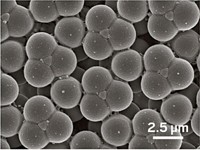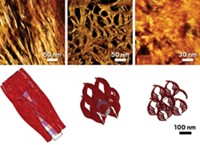Advertisement
Grab your lab coat. Let's get started
Welcome!
Welcome!
Create an account below to get 6 C&EN articles per month, receive newsletters and more - all free.
It seems this is your first time logging in online. Please enter the following information to continue.
As an ACS member you automatically get access to this site. All we need is few more details to create your reading experience.
Not you? Sign in with a different account.
Not you? Sign in with a different account.
ERROR 1
ERROR 1
ERROR 2
ERROR 2
ERROR 2
ERROR 2
ERROR 2
Password and Confirm password must match.
If you have an ACS member number, please enter it here so we can link this account to your membership. (optional)
ERROR 2
ACS values your privacy. By submitting your information, you are gaining access to C&EN and subscribing to our weekly newsletter. We use the information you provide to make your reading experience better, and we will never sell your data to third party members.
Materials
Spotlight On Cement
A molecular model for evaluating the CaO-SiO2-H2O mineral phase in cement promises ever better use of the ubiquitous building material
by Stephen K. Ritter
September 21, 2009
| A version of this story appeared in
Volume 87, Issue 38

Cement used to make mortar and concrete is one of the most common building materials in the world. Despite its longtime use and scrutiny, there is still more to learn. An MIT research team led by Roland J.-M. Pellenq, Sidney Yip, and Franz-Josef Ulm is reporting a new molecular model for evaluating cement hydrate—the calcium-silicate-water mineral phase in cement—that they say is the most realistic view of the material to date (Proc. Natl. Acad. Sci. USA, DOI: 10.1073/pnas.0902180106). Previous models based on natural mineral analogs indicated that cement nanoparticles consist of long SiO2 chains interspersed with neat layers of CaO and H2O. Building on neutron scattering data reported in the literature that pinpointed cement hydrate’s Ca/Si ratio and density, the researchers created a model showing that the nanoparticles are more accurately a hybrid of crystalline and amorphous CaO-SiO2-H2O. The hybrid model contains shorter SiO2 chains with flaws that reach into the CaO layers, creating void spaces where H2O molecules gather. This minor disorder provides some atomic-level give to cement, allowing it to stretch or compress under stress, rather than snapping. “Now that we have a validated molecular model, we can better manipulate cement’s chemical structure to design concrete for desired strength, durability, and environmental qualities, such as low CO2 emissions,” Ulm says.





Join the conversation
Contact the reporter
Submit a Letter to the Editor for publication
Engage with us on Twitter